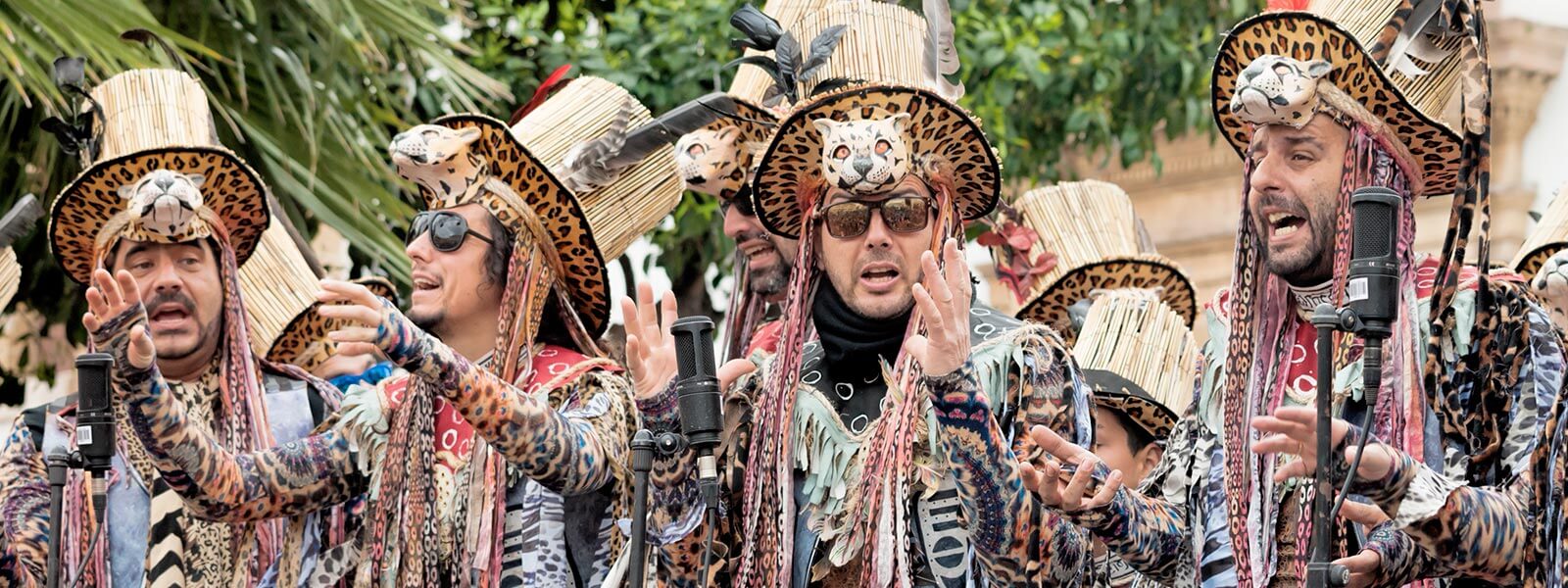
If there is anything that differentiates the Carnival in Cádiz form the rest of the Carnival celebrations around the world, it would be that in Cádiz, for an entire week, the celebration is held almost exclusively in the street. Music and good feelings flood the city during this time, but before this street party kicks off a contest is held in the Gran Teatro Falla to determine the best Carnival associations.
These associations, or agrupaciones, are comprised of choruses, comparsas, quartets and chirigotas. These groups dress in costumes and sing about current events, often with biting social commentary. In this contest, they will try to outwit and outdo the other groups with the hope of being the winner in their class.
The choruses (or coros) are the largest associations that include different musical instruments baking up a large vocal section. Even though quartets (or cuartetos) implies four people, these groups are actually formed by three to five people and don’t rely on instruments. Finally, there are the comparsas and chirigotas which have many similarities.
Like the comparsas, chirigotas sing while accompanied by guitars, a bass drum, a caja (a typical Andalusian percussion instrument common in flamenco) and the famous pito or güiro (kazoo), but what is the difference?
Compared to the chirigota, the comparsa is an association that is offers a more critical view of society and current and social events. Their lyrics tend to be more poetic with a more social message and their purpose isn’t necessarily to be funny. The groups are formed by 12 to 15 members and comprised of different voices like octavilla (singing two notes above the tenor), contralto, tenor and segunda (baritone). The structure of a typical comparsa is the following: presentation, pasodobles, cuplés, chorus and medley.
The Chirigotas also offers original and witty lyrics with the purpose of making people laugh. These associations are comprised of between seven and 15 people whose voices range from contralto, tenor and baritone. A typical chirigota has 5 fundamental parts: presentation, pasodobles x2, cuplés x2, chorus (repeated after each cuplé) and medley.
Do you want to know more about Carnival in Spain? Then don’t miss our article in Enforex.com
-
 Christmas decorations in Spain How are Christmas decorations in Spain? Look at this post and know the curiosities of Spanish houses and their traditions
Christmas decorations in Spain How are Christmas decorations in Spain? Look at this post and know the curiosities of Spanish houses and their traditions -
 Cadiz carnival: A brief history Discover the Carnival of Cádiz, the most popular party in the city of Andalusia, which has the funniest and most naughty songs you've never heard before.
Cadiz carnival: A brief history Discover the Carnival of Cádiz, the most popular party in the city of Andalusia, which has the funniest and most naughty songs you've never heard before. -
 How to construct a ‘falla’ Valencia celebrates its most popular party in style, that of ‘Las Fallas’. It is a celebration based on fire and fireworks. Discover this party
How to construct a ‘falla’ Valencia celebrates its most popular party in style, that of ‘Las Fallas’. It is a celebration based on fire and fireworks. Discover this party

